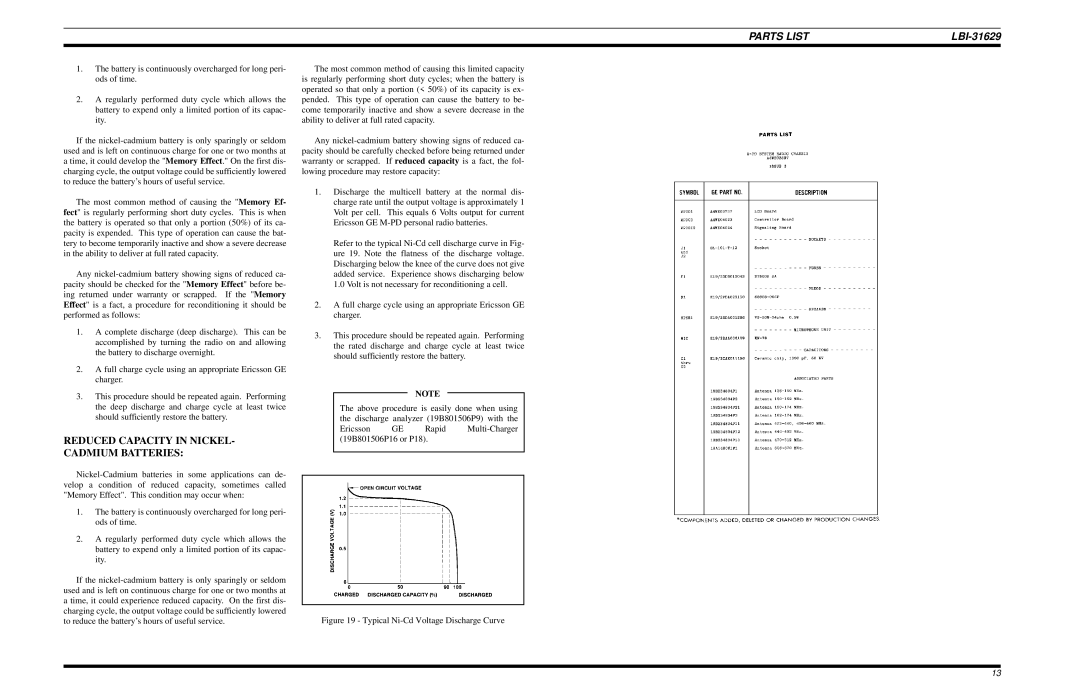
PARTS LIST |
|
|
|
1.The battery is continuously overcharged for long peri- ods of time.
2.A regularly performed duty cycle which allows the battery to expend only a limited portion of its capac- ity.
If the
The most common method of causing the "Memory Ef- fect" is regularly performing short duty cycles. This is when the battery is operated so that only a portion (50%) of its ca- pacity is expended. This type of operation can cause the bat- tery to become temporarily inactive and show a severe decrease in the ability to deliver at full rated capacity.
Any
1.A complete discharge (deep discharge). This can be accomplished by turning the radio on and allowing the battery to discharge overnight.
2.A full charge cycle using an appropriate Ericsson GE charger.
3.This procedure should be repeated again. Performing the deep discharge and charge cycle at least twice should sufficiently restore the battery.
REDUCED CAPACITY IN NICKEL- CADMIUM BATTERIES:
1.The battery is continuously overcharged for long peri- ods of time.
2.A regularly performed duty cycle which allows the battery to expend only a limited portion of its capac- ity.
If the
The most common method of causing this limited capacity is regularly performing short duty cycles; when the battery is operated so that only a portion (< 50%) of its capacity is ex- pended. This type of operation can cause the battery to be- come temporarily inactive and show a severe decrease in the ability to deliver at full rated capacity.
Any
1.Discharge the multicell battery at the normal dis- charge rate until the output voltage is approximately 1 Volt per cell. This equals 6 Volts output for current Ericsson GE
Refer to the typical
2.A full charge cycle using an appropriate Ericsson GE charger.
3.This procedure should be repeated again. Performing the rated discharge and charge cycle at least twice should sufficiently restore the battery.
NOTE
The above procedure is easily done when using the discharge analyzer (19B801506P9) with the
Ericsson GE Rapid
Figure 19 - Typical Ni-Cd Voltage Discharge Curve
13
